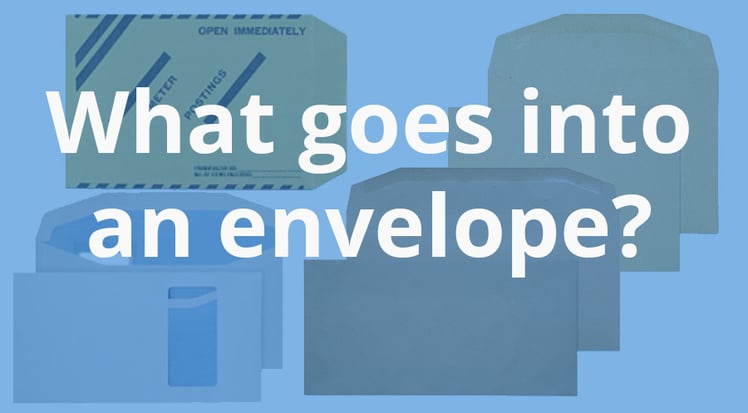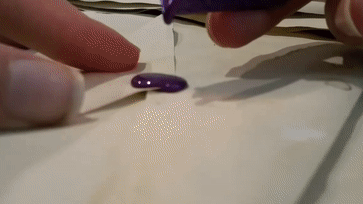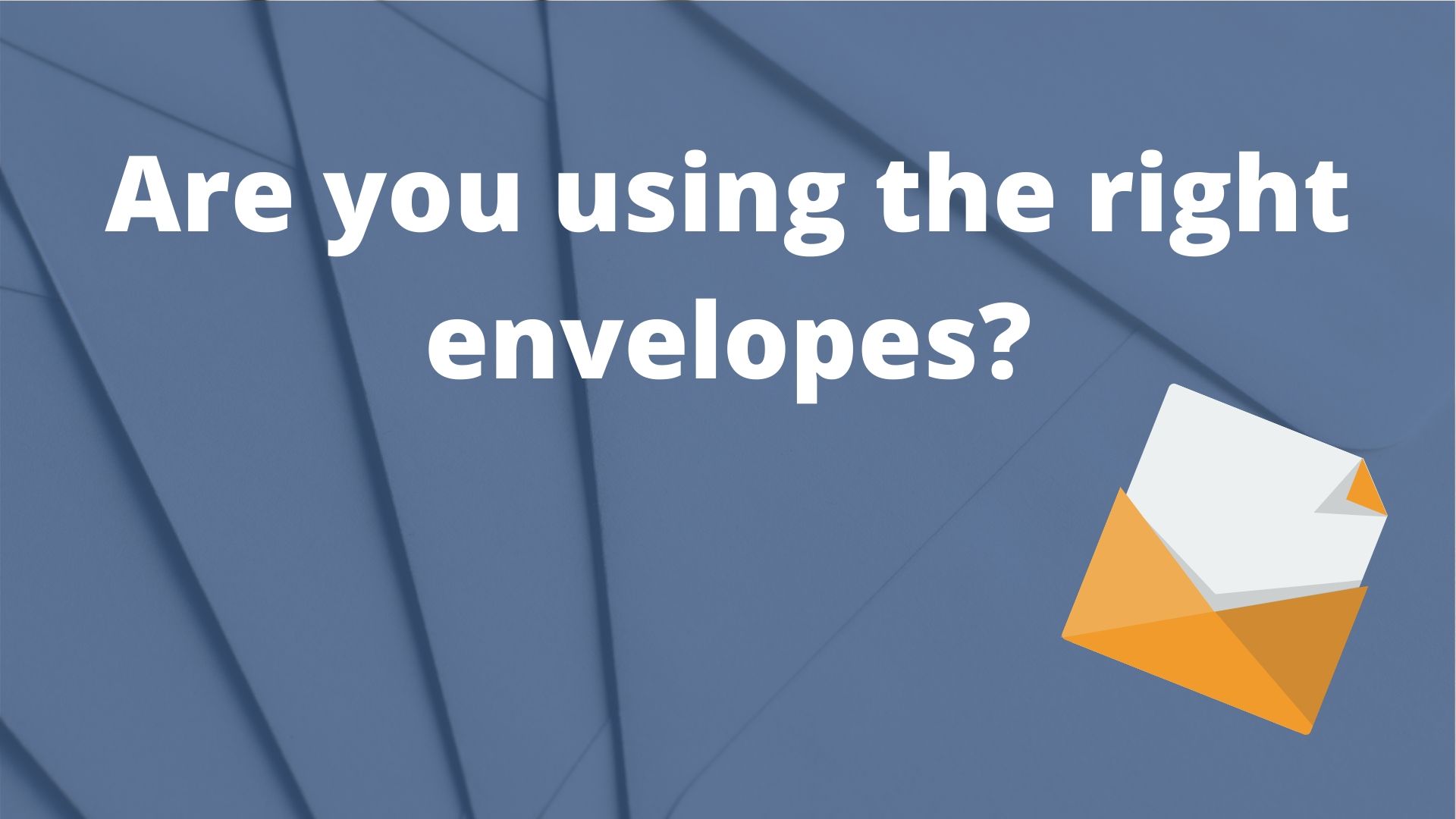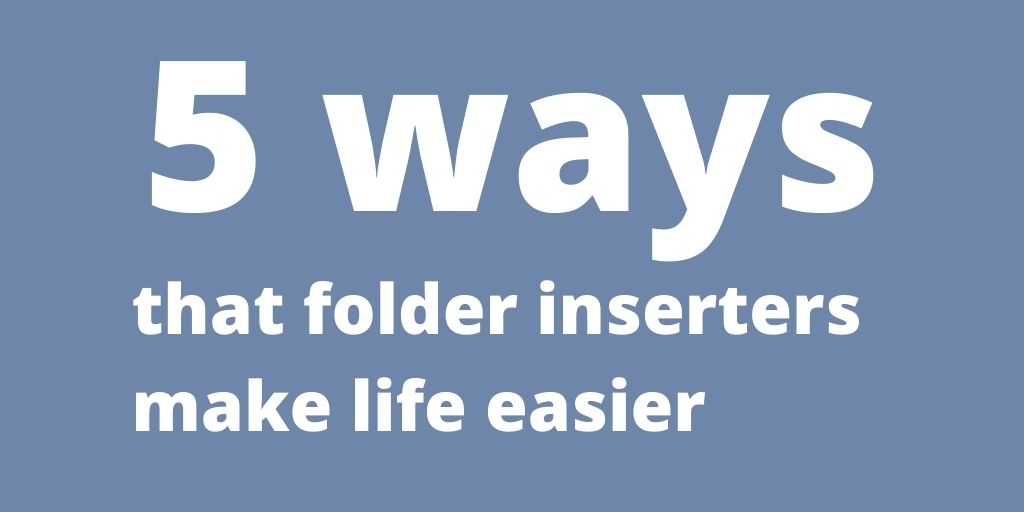
Your envelopes are important!
You see envelopes every day - whether on your desk at work or doormat at home, not to mention the post you send out yourself. At Twofold we sell around 20 million envelopes a year and provide businesses with mailroom equipment such as folder inserters and franking machines to speed up processes while minimising errors, allowing hundreds of thousands of envelopes a week to be sent successfully to their recipients.
So … you may know what goes into your envelope, but what about what goes into how the envelope came to be?
Here is a list of facts and trivia about the humble envelope:
- The first known "envelope" dated back to between 3,500 to 3,200 B.C in the Middle East. These envelopes were a little different from those we use today as they were clay spheres shaped around their contents.
- Paper envelopes first used in China in the 2nd Century, usually to send gifts of money.
- Envelopes used to have four symmetrical flaps that met in the exact middle of the letter so that they could be closed and secured by a single wax seal (very Game of Thrones!)

- In 1845, Edwin Hill and Warren de la Rue patented a mechanical process that cut out and folded envelopes (although gumming still had to be added by hand).
- The Victorians used the placement of the stamp creatively to express secret messages between young lovers whose parents censored their mail. For instance, an upside down stamp meant "I love you" a diagonal stamp meant "I miss you" (… or possibly, ‘I’m drunk’)
- Window envelopes were originally called “outlook envelopes”.
- Manila envelopes are named after the material used to make them. The Manila hemp used is derived from a species of banana originally from the Philippines, whose fibers are tough and ideal for these strong envelopes.
- In the 2017-18 year Royal Mail delivered around 14.4 billion letters.
- The phrase “push the envelope”, meaning to go beyond current limits of performance was first seen in 1978 and has its origins in aviation. It came from the phrase “flight envelope” for a plane’s operational or performance boundaries.
- Pocket, wallet or banker? Pocket envelopes have a flap along the short side, while the wallet and banker have them along the longer side.
Stop Stuffing Envelope by hand: Request a quote from Twofold>>
Save time and free your staff to carry out more important work by using a folder inserter to fill and seal your envelopes. With a range of size and speed available, and full maintenance and servicing, you’ll soon find your folder inserter is an indispensable addition to the office.
Ever wondered about the journey of an letter? watch this video >>
Important Envelope Considerations
Don’t take the humble envelope for granted, it definitely deserves more thought.
The envelope is often the first contact your audience has with your business, so its appearance needs to say a lot about you. You are communicating a visual and tactile message through the envelope, so you want to keep in mind the impression you hope to make. Your envelope should reflect both your brand and personality.
Use these five facts about envelopes to choose the right one for the job:
- Size It Right: Size impacts cost and mailability. Make sure contents fit snugly enough and that the postage is correct for the size and weight - see our handy pricing chart. The standard letter should weigh no more than 100g, be no longer than 24cm, with a width of 16.5cm, and be no thicker than 5mm.
- Brand It: Your outgoing mail is a perfect opportunity to add branding, marketing messages and images to be seen by your customers. Your franking machine can add basic logos and messages, and an address printer can add even more.
- Be bold, be seen: If you're using mailing labels, you can explore a wider range of envelope colours, and an envelope address printer will print fill colour directly across the entire front of the envelope – and even add personalised messages
- Create an impression: Choose a product that makes the right impression. Hold your envelope in your hands, and imagine the impression it gives your potential customers – is it high quality, strong and reliable – just like your brand? We can provide samples for you to try out before you commit to a large quantity.
- Protect the Contents: For important documents, we recommend CheckSecure envelopes with a unique opaque printed on the inside to prevent prying eyes from seeing the contents, and for more fragile mail, a padded mailer with stiff edges.
If you have any questions about mailroom equipment from Twofold, please call on 0118 951 9800, or complete the form below.
Karen James
Envelope product specialist

.png?width=828&height=208&name=Twofold-Logos-no%20drop%20(1).png)


